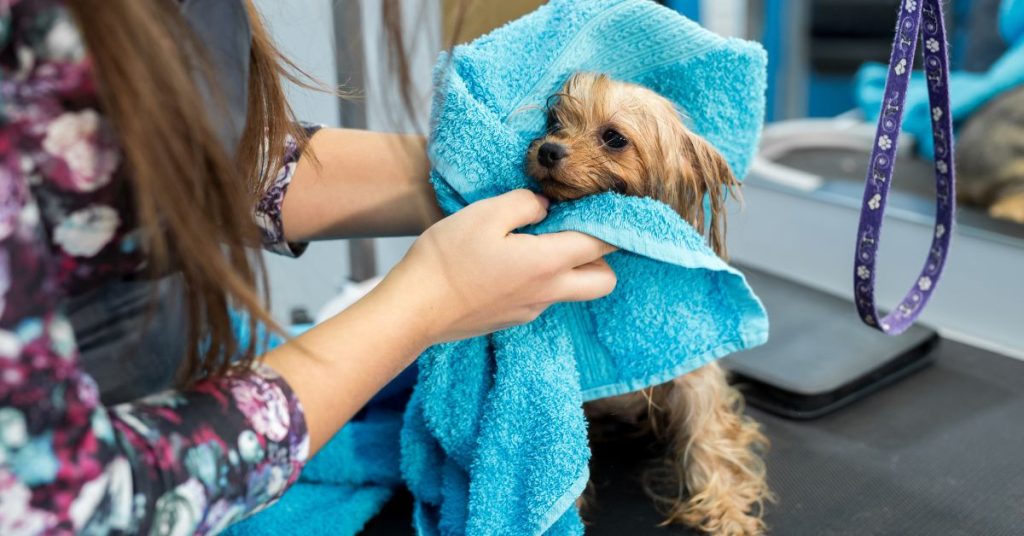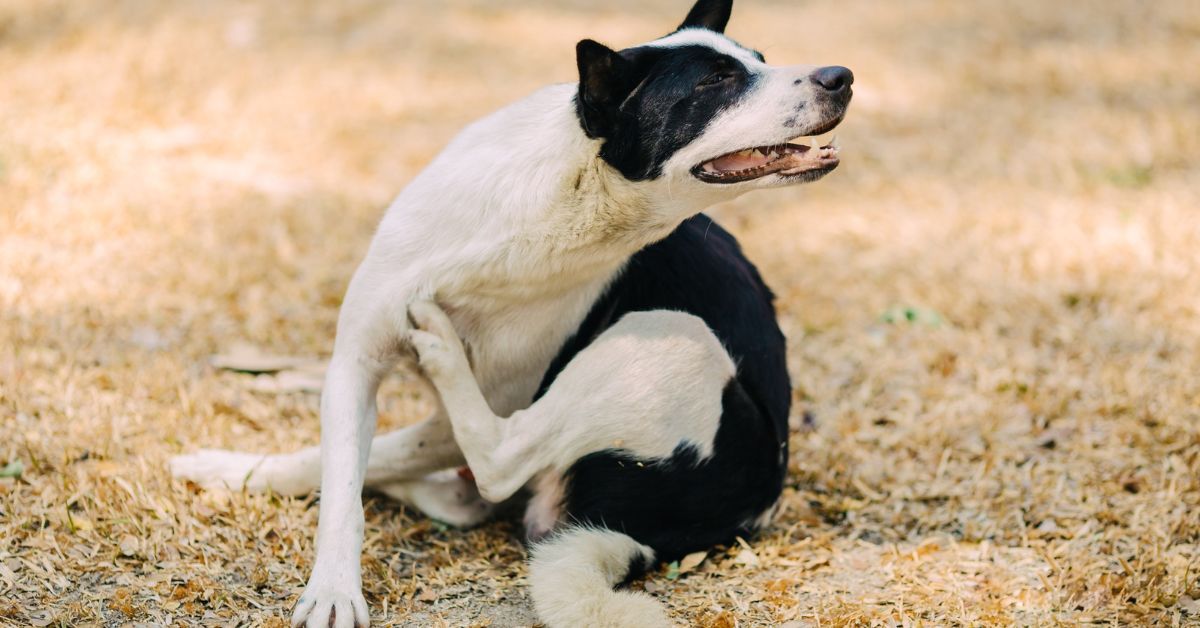For many pet owners, grooming is a daunting task, especially if their furry friend becomes anxious or stressed at the sight of grooming tools. It’s not unusual to struggle to calm your dog before a grooming session. Learning how to calm dogs for grooming can make the session more enjoyable for you and your pet.
In this guide, we’ll explore practical tips and techniques to help you calm your dog and turn grooming into a positive bonding experience. With patience, empathy, and the right approach, you can make grooming a relaxing ritual for your dog. So, let’s dive in.
Can Techniques for Calming a Dog Help During Grooming an Aggressive Dog?
When dealing with an aggressive dog, effective grooming techniques for aggressive dogs can make all the difference. These methods focus on creating a calm environment, using soothing sounds, and incorporating positive reinforcement. By employing these strategies, grooming sessions can become less stressful for both the dog and the groomer.
How to Calm Your Dog for Grooming
With the right approach, you can help your dog feel more comfortable during grooming sessions. Here’s how to calm a dog for grooming:
Start Slow: Introduce Tools Gradually
Grooming tools that are unfamiliar to your dog can be intimidating. Introduce grooming tools gradually to them to ease them into the process.
Give treats and praise when your dog behaves calmly while sniffing and exploring the tools. It helps create positive associations with the tools and reduces anxiety.
Use Positive Reinforcement Throughout
Positive reinforcement is the key to making your dog feel comfortable during grooming. Reward your dog for remaining calm and cooperative throughout the grooming process with treats and praise. If your dog associates grooming with positive experiences, future grooming sessions will be easier.
Establish a Consistent Routine
Establishing a regular grooming schedule can help reduce anxiety in dogs. You should groom your dog at a time and place where they feel relaxed and comfortable. Maintaining consistency makes grooming seem like a regular part of your dog’s schedule.
Create a Calm Environment
Choose a quiet, familiar space with minimal distractions for a relaxing grooming experience. Soft lighting and soothing music can help create a calming atmosphere for your dog. To reduce dog stress, use diffusers or sprays containing pheromones.
Practice Patience and Reassurance
If your dog shows signs of anxiety or stress during grooming sessions, be patient with them. If necessary, take breaks and comfort them with gentle, reassuring words and movements. Your dog will feel more relaxed if you don’t hurry through the grooming process.
Exercise Before Grooming
Consider exercising your dog before grooming to help release excess energy. Walking or playing can help your dog feel calmer and more focused during grooming. Exercise also reduces stress and anxiety levels, making it a great way to prepare your dog for grooming.
Aromatherapy
Consider using aromatherapy to help calm your dog during grooming. Lavender and chamomile scents are known to have calming properties and can help your dog relax. You can use essential oils in a diffuser or dilute them with water and spray them lightly in the grooming area.
However, some essential oils may be harmful to dogs, so it’s important to exercise caution when using aromatherapy on them. Before using aromatherapy on your dog, check with your vet and make sure there’s enough ventilation.
Medical Sedation for Dogs
During grooming, your veterinarian might recommend medical sedation if you’re scared or anxious. The grooming process will be more straightforward for both of you if you use sedatives. However, you should only use medical sedation under the guidance of a vet. Depending on your dog’s health and needs, they’ll determine the dosage and how to administer it.
Follow your vet’s instructions carefully and monitor your dog closely during and after sedation to ensure their safety. For best results, it’s always best to combine sedation with behavior modification techniques.
Seek Professional Help if Needed
You can seek help from a professional groomer or veterinarian behaviorist if your dog’s anxiety persists. They can provide additional support and guidance tailored to your dog’s specific needs. Having a professional grooming your pet can help make grooming a more positive experience for him.
How Do You Groom an Unwilling Dog?
It is important to be patient and gentle when grooming a dog that does not want to be groomed. Using positive reinforcement, gradually desensitize your dog to grooming tools. Consider breaking the grooming procedure into smaller, manageable steps and taking breaks when necessary.
Use treats and praise to reward calm behavior, and never force your dog into a grooming session. Consult a professional groomer or behaviorist experienced in working with reluctant dogs if necessary.
Read More: How Often To Take Dog To Groomer
The Takeaway
Using patience, empathy, and these techniques, you can turn grooming into a positive bonding experience for you and your dog. Start slow, use positive reinforcement, and create a calm environment for your dog. Do not hesitate to seek professional help if challenges persist. With dedication and love, you can make grooming fun and rewarding for you and your pet.




